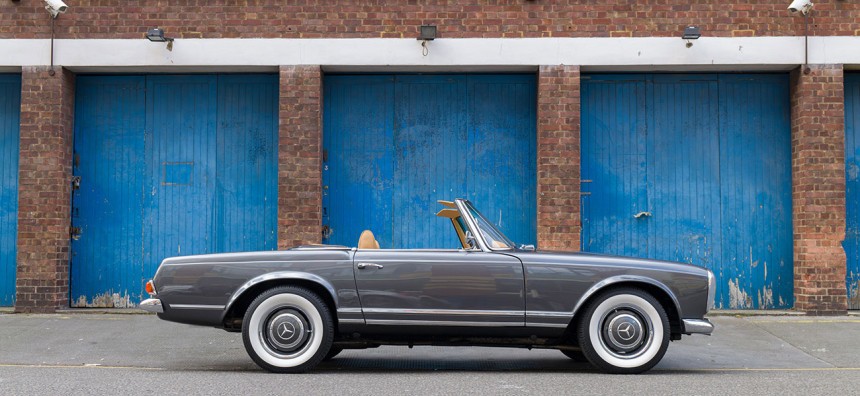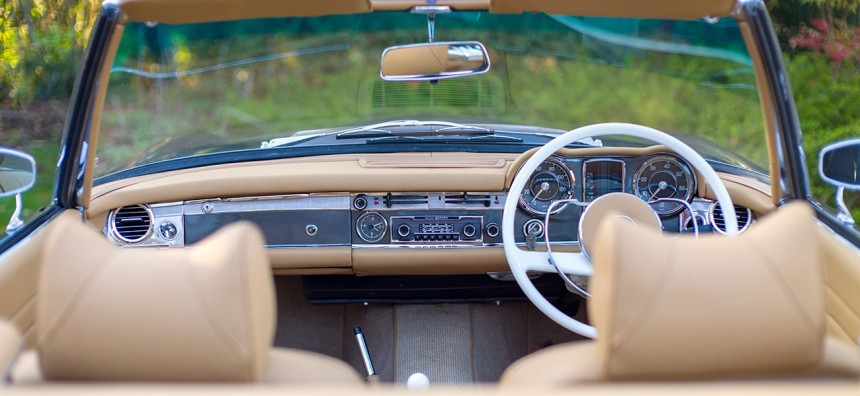The idea of turning classic cars into electric vehicles is not new, but what makes ionic cars stand out from the crowd is the promise that the electrification is fully reversible and done without compromising the original design.
Think of it this way: double the pleasure, zero the guilt. ionic cars is the brainchild of UK-based, ex-fintech entrepreneur Justin Lunny, who started thinking about the prospect of bringing classics into the electrified future when he had kids of his own. Like with most people, that was the moment that really got him thinking about the kind of world they would live in.
The idea that classic cars would no longer be road-legal within 15 years if emissions legislation changes also contributed to the decision, as he explains in a brief statement to The Robb Report. He identified a gap in the market but, at the same time, a way to help collectors still enjoy their prized possessions with less hassle and considerably less maintenance costs.
“I am a car lover, always have been,” Lunny says. “Once I had children, though, I started looking at electric cars and emissions became more important to me.”
“It is for people who have loved these cars but never dared to own them, perhaps they don’t want the bother of checking oil on a dipstick – they love the idea of being seen in one but not the ownership challenges of a classic,” Lunny continues. “With these, there are easier to handle elements, like regenerative braking and no gears.”
As of the time of press, ionic cars has a 1967 Mercedes-Benz 280 SL “Pagoda” and 1993 Porsche 911 964 “Targa” in the shop, undergoing restoration and electrification. Their private client portfolio includes Porsche 911s and Jaguar E-Types, but the plan is to officially go on the market this June.
ionic cars believes the first models will become available this summer, with worldwide shipping and prices starting from $200,000. The electrified “Pagoda” now in the shop, for instance, will cost £250,000 (which is roughly $310,000 at the current exchange) but pricing on the “Targa” is available on request. The goal is to be able deliver about three cars per month.
Each electrification and restoration process takes about 6 months to complete and is open to suggestions from the future owner. A more eco-conscious owner, for example, could request to have real leather finishes replaced with vegan leather. Heated seats, matching luggage or left-hand drives will also be on the list of possible customization options.
All restored models will come with a 160-mile range, improved performance and regenerative braking. The range is not impressive compared to that of a new EV, but it’s more than enough to “pop to a Michelin-starred lunch and back,” Lunny says, while allowing the owner to enjoy the feel of a classic car and benefit from technology of the future. Or, as the motto of ionic cars puts it, “iconic past, ionic future.”
All conversions are done with an eye out to maintain structural integrity. The integration of the battery pack and even of new dials on the dashboard is done in a way that preserves the original appearance, in accordance with the styling of the car. The same goes for any modification required by the client.
To collectors in doubt whether electrification would “ruin” their classics, ionic cars has this to say: the process is not just minimally intrusive on the original design, but entirely reversible. All engine mounts and fixing are kept in place, and the original engine can be placed in a Perspex case, in view of putting it to use at some later point in time.
“An ionic car will always have the soul of its manufacturer,” ionic cars says. “Our subtle branding takes nothing from the original beauty of these iconic vehicles, with each masterpiece lovingly restored using sustainable, modern materials and high-quality finishing techniques.”
Getting to drive around in a gas-guzzling but beautiful classic, with zero guilt as to what it’s doing to the environment – ionic cars says you can now do both.
The idea that classic cars would no longer be road-legal within 15 years if emissions legislation changes also contributed to the decision, as he explains in a brief statement to The Robb Report. He identified a gap in the market but, at the same time, a way to help collectors still enjoy their prized possessions with less hassle and considerably less maintenance costs.
“I am a car lover, always have been,” Lunny says. “Once I had children, though, I started looking at electric cars and emissions became more important to me.”
“It is for people who have loved these cars but never dared to own them, perhaps they don’t want the bother of checking oil on a dipstick – they love the idea of being seen in one but not the ownership challenges of a classic,” Lunny continues. “With these, there are easier to handle elements, like regenerative braking and no gears.”
ionic cars believes the first models will become available this summer, with worldwide shipping and prices starting from $200,000. The electrified “Pagoda” now in the shop, for instance, will cost £250,000 (which is roughly $310,000 at the current exchange) but pricing on the “Targa” is available on request. The goal is to be able deliver about three cars per month.
Each electrification and restoration process takes about 6 months to complete and is open to suggestions from the future owner. A more eco-conscious owner, for example, could request to have real leather finishes replaced with vegan leather. Heated seats, matching luggage or left-hand drives will also be on the list of possible customization options.
All restored models will come with a 160-mile range, improved performance and regenerative braking. The range is not impressive compared to that of a new EV, but it’s more than enough to “pop to a Michelin-starred lunch and back,” Lunny says, while allowing the owner to enjoy the feel of a classic car and benefit from technology of the future. Or, as the motto of ionic cars puts it, “iconic past, ionic future.”
To collectors in doubt whether electrification would “ruin” their classics, ionic cars has this to say: the process is not just minimally intrusive on the original design, but entirely reversible. All engine mounts and fixing are kept in place, and the original engine can be placed in a Perspex case, in view of putting it to use at some later point in time.
“An ionic car will always have the soul of its manufacturer,” ionic cars says. “Our subtle branding takes nothing from the original beauty of these iconic vehicles, with each masterpiece lovingly restored using sustainable, modern materials and high-quality finishing techniques.”
Getting to drive around in a gas-guzzling but beautiful classic, with zero guilt as to what it’s doing to the environment – ionic cars says you can now do both.














